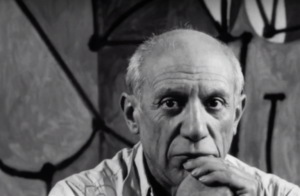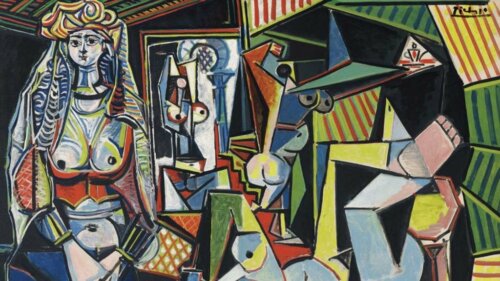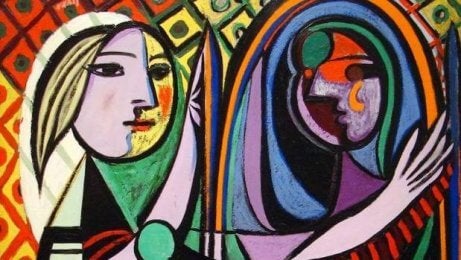Picasso, a Biography of the Father of Cubism


Reviewed and approved by the psychologist Gema Sánchez Cuevas
Pablo Ruiz Picasso, the father of cubism, is one of the most notable artists in contemporary history, no doubt. He was an activist as well as a painter. In fact, his works reveal his rather thoughtful thinking in regard to the world around him.
Pablo strove to analyze reality in a unique way. Cubism, the stylistic trend he started, was one of the greatest influences of 20th-century visual arts. Note that painting wasn’t the only area in which Picasso developed his skills. He also explored ceramics, sculpture, theater, cinema, prints, and ballet set designs. These are just some of the disciplines he experienced.
Picasso was a reference, an innovative artist, a brilliant man who went down in history and who will never be forgotten. This article will explore some interesting facts about him. Stick around to find out more!
Picasso – the early years of the father of cubism
The painter’s full name was Pablo Diego José Francisco de Paula Juan Nepomuceno María de los Remedios Cipriano de la Santísima Trinidad Ruiz y Picasso. However, the artist always preferred to go by his first and last name only.
Born in Malaga on October 25, 1881, Picasso was the eldest son of an artistic family. Thus, he had that influence early on. Pablo’s father was a drawing professor at the Escuela Provincial de Artes y Oficios in Malaga, Spain. It was he who taught Pablo his first drawing and painting techniques.
During his childhood, Pablo had to move constantly from one city to another due to the nature of his father’s work. Young Picasso wasn’t all too interested in traditional subjects, but he was an avid trainee when it came to drawing and painting.
At 17, he received an honorable mention at the Fine Arts Exhibition in Madrid. From then on, his life began to be a series of successes, awards, and recognition. At that time, the Picasso family was already residing in the city of Barcelona, once again, as a consequence of the father’s work. The city of Barcelona would define Picasso as one of the greatest characters of the 20th century.
“Bad artists copy, good artists steal.”
-Pablo Picasso-

Picasso, the father of Cubism and exponent of the avant-garde art movement
Picasso met many of the young people who would later form the avant-garde movement during his time in Barcelona. Between 1898 and 1900, Pablo was already a regionally famous artist. This is when he decided to start signing his paintings using only Picasso, his mother’s last name.
A few years later, in 1904, Pablo moved to the French capital, the place where all the young artists of the era wanted to be at. This is because Paris was one of the main art hubs of the 20th century.
In the 19th century, Paris was already the place where poets, writers, musicians, painters, sculptors, ceramists, critics, and hedonists, in general, wanted to be. It was the place where one could “breathe” art. Where the bourgeoisie intermingled at night with prostitutes and dancers. Paris had an interesting nightlife that smelled of opium and tasted like absinthe. Therefore, it’s not surprising for it to be idealized and desired by the artists of the moment. Paris had a bohemian vibe, the kind Puccini embodied in his opera La Bohème.
It was such an impressive moment for art and literature that artists of later eras still try to capture it and pay tribute to it in their work. For instance, Woody Allen’s Midnight in Paris is the perfect example of this large gathering of influences.
Paris
During his stay in Paris, Picasso began to develop Cubism, the artistic style for which he’ll always be remembered. Under the influence of Paul Cézanne and accompanied by Braque and Apollinaire, Picasso began to distort reality in a rather unique way. Cubism, in its beginnings, represented a form of abstraction of landscapes and natural forms.
Picasso lived an intense life of political activism while developing his artistic life. He joined the communist party and remained a faithful defender of the republic and social rights. However, he rejected violence and decided not to fight on the front lines during the wars.
Pablo was a rather passionate man which he expressed through his many romances. The artist thoroughly enjoyed his love, though. Olga Khokhlova, Marie-Thérèse Walter, Dora Maar, and, of course, his wife, Jacqueline Roque were among his most important muses.

The importance of Pablo Picasso in the avant-garde movement
Pablo Picasso may just be the most iconic artist of the 20th century. This is because he represents everything an avant-garde artist should be. He was an artist who constantly reinvented his work. He didn’t mind being influenced by the work of his contemporaries but was always true to himself.
Final notes
Pablo Ruiz Picasso, the father of cubism, is one of the most notable artists in contemporary history, no doubt. He was an activist as well as a painter. In fact, his works reveal his rather thoughtful thinking in regard to the world around him.
Pablo strove to analyze reality in a unique way. Cubism, the stylistic trend he started, was one of the greatest influences of 20th-century visual arts. Note that painting wasn’t the only area in which Picasso developed his skills. He also explored ceramics, sculpture, theater, cinema, prints, and ballet set designs. These are just some of the disciplines he experienced.
Picasso was a reference, an innovative artist, a brilliant man who went down in history and who will never be forgotten. This article will explore some interesting facts about him. Stick around to find out more!
Picasso – the early years of the father of cubism
The painter’s full name was Pablo Diego José Francisco de Paula Juan Nepomuceno María de los Remedios Cipriano de la Santísima Trinidad Ruiz y Picasso. However, the artist always preferred to go by his first and last name only.
Born in Malaga on October 25, 1881, Picasso was the eldest son of an artistic family. Thus, he had that influence early on. Pablo’s father was a drawing professor at the Escuela Provincial de Artes y Oficios in Malaga, Spain. It was he who taught Pablo his first drawing and painting techniques.
During his childhood, Pablo had to move constantly from one city to another due to the nature of his father’s work. Young Picasso wasn’t all too interested in traditional subjects, but he was an avid trainee when it came to drawing and painting.
At 17, he received an honorable mention at the Fine Arts Exhibition in Madrid. From then on, his life began to be a series of successes, awards, and recognition. At that time, the Picasso family was already residing in the city of Barcelona, once again, as a consequence of the father’s work. The city of Barcelona would define Picasso as one of the greatest characters of the 20th century.
“Bad artists copy, good artists steal.”
-Pablo Picasso-

Picasso, the father of Cubism and exponent of the avant-garde art movement
Picasso met many of the young people who would later form the avant-garde movement during his time in Barcelona. Between 1898 and 1900, Pablo was already a regionally famous artist. This is when he decided to start signing his paintings using only Picasso, his mother’s last name.
A few years later, in 1904, Pablo moved to the French capital, the place where all the young artists of the era wanted to be at. This is because Paris was one of the main art hubs of the 20th century.
In the 19th century, Paris was already the place where poets, writers, musicians, painters, sculptors, ceramists, critics, and hedonists, in general, wanted to be. It was the place where one could “breathe” art. Where the bourgeoisie intermingled at night with prostitutes and dancers. Paris had an interesting nightlife that smelled of opium and tasted like absinthe. Therefore, it’s not surprising for it to be idealized and desired by the artists of the moment. Paris had a bohemian vibe, the kind Puccini embodied in his opera La Bohème.
It was such an impressive moment for art and literature that artists of later eras still try to capture it and pay tribute to it in their work. For instance, Woody Allen’s Midnight in Paris is the perfect example of this large gathering of influences.
Paris
During his stay in Paris, Picasso began to develop Cubism, the artistic style for which he’ll always be remembered. Under the influence of Paul Cézanne and accompanied by Braque and Apollinaire, Picasso began to distort reality in a rather unique way. Cubism, in its beginnings, represented a form of abstraction of landscapes and natural forms.
Picasso lived an intense life of political activism while developing his artistic life. He joined the communist party and remained a faithful defender of the republic and social rights. However, he rejected violence and decided not to fight on the front lines during the wars.
Pablo was a rather passionate man which he expressed through his many romances. The artist thoroughly enjoyed his love, though. Olga Khokhlova, Marie-Thérèse Walter, Dora Maar, and, of course, his wife, Jacqueline Roque were among his most important muses.

The importance of Pablo Picasso in the avant-garde movement
Pablo Picasso may just be the most iconic artist of the 20th century. This is because he represents everything an avant-garde artist should be. He was an artist who constantly reinvented his work. He didn’t mind being influenced by the work of his contemporaries but was always true to himself.
Final notes
This text is provided for informational purposes only and does not replace consultation with a professional. If in doubt, consult your specialist.







